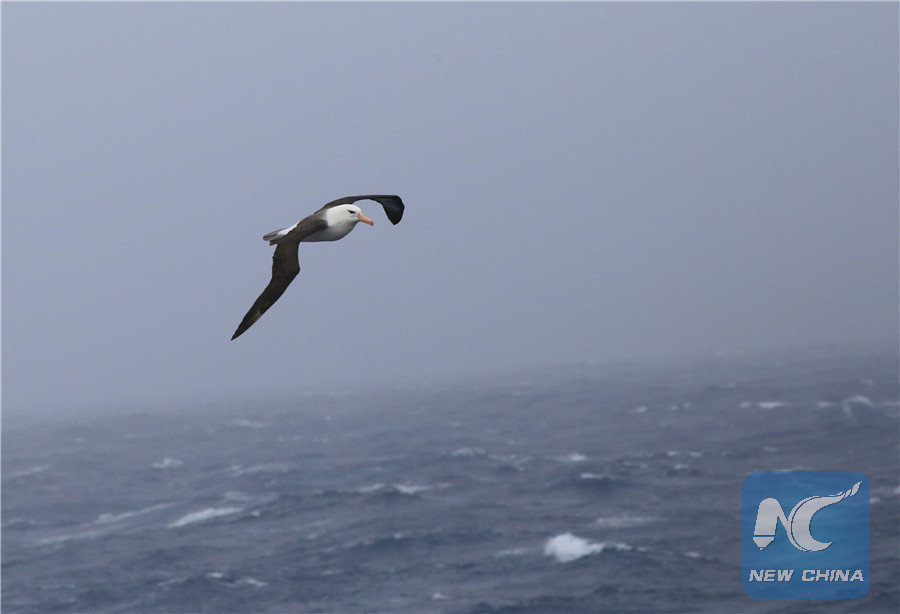
The white-chinned petrel
ANTARCTICA, April 20 (Xinhua) -- In the last episode of the Antarctic seabird series, we will take you to get acquainted with three more species that are regarded as the fashion leaders in the kingdom of seabirds.
The cape petrel

The cape petrel
The cape petrel wears a coat with two colors that will never be outdated in the fashion world: black and white. The head and neck are black, and the belly and breast are white. Its back and upper wings are black and white speckled, with a black tail attached to them.
It is a common species in the Southern Ocean with an estimated population of around 2 million. When fully grown, they are 39 cm in length and their wings span 86 cm.
About 80% of their diet comes from crustaceans, as well as fish and squid. One of their favorite things to do is to follow ships and eat kitchen waste thrown into the sea. They can be very aggressive while feeding, for they will spit a kind of stomach oil at their competitors.
The white-chinned petrel

The white-chinned petrel
White-chinned petrels are easily recognized by the dark brown body and the light yellow beak.
Measuring 51-58 cm in length and spanning 134-147 cm across the wings, the white-chinned petrel is the second largest petrel after the giant petrel.
It lives around the Southern Ocean with a population of around 7 million. The seabirds are widely spotted in southern Australia, Peru and Namibia.
The black-browed albatross

The black-browed albatross
Look at its cool make-up: the black eyebrow! Apart from the eyebrow, the features that distinguish it from other albatrosses also include white head and neck, orange bill, and darker orange tip.

The black-browed albatross
It is the most widespread and common member of the albatross family, distributed mainly in the Southern Ocean around the Antarctic land. A few of them have been to the northern hemisphere such as the Bahamas and the British Isles.
The species is 80-95cm long and its wings span 200-240 cm wide, weighing 3-4.7 kg. There are more than 2 million of them on the earth. It can have a lifespan of 70 years.
(Photos provided to Xinhua by Zhang Yanyun and Miao Xing, researchers with China's 33rd Antarctic expedition; Mu Lianqing, researcher with China's 32nd Antarctic expedition.)

